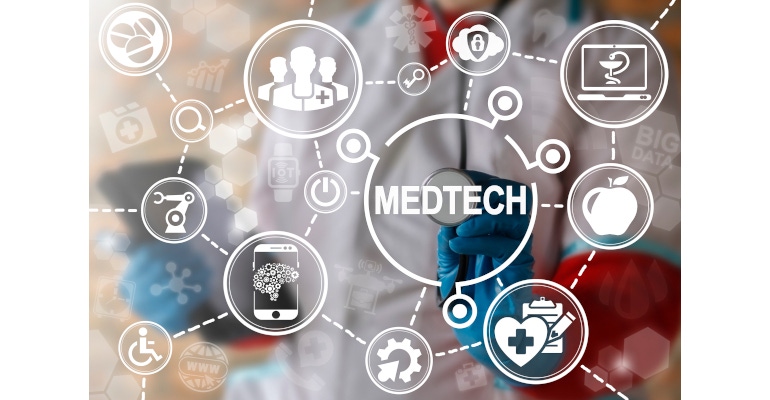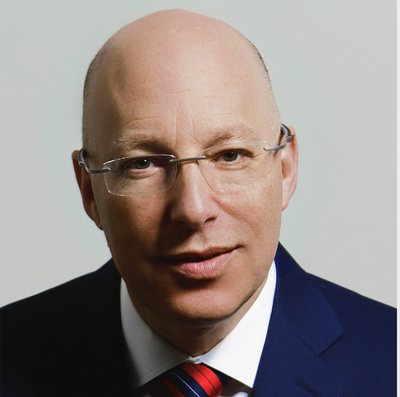Medical Device Technology as a Driving Force in U.S. Healthcare
Medical device technology continues to evolve, offering the hope of better health management. But is reimbursement evolving, too?

An ideal healthcare system is one that cures every patient of whatever medical condition they have. However, healthcare professionals have always had to judge whether they can cure a patient of a condition or simply manage it to enable the patient to live the best life they can. The reality is that many pharmaceutical interventions and treatment options are designed to manage people’s illnesses—but not necessarily cure them.
This results in an increased burden of pressure on healthcare costs, particularly as people live longer and the proportion of illnesses that are manageable, rather than curable, increase—as do the requirements for long-term care.
Historically, there are many medical conditions that have been difficult to cure, from diabetes to high blood pressure—meaning a ‘maintenance approach’ has been the only option. However, this is expensive and challenging, both in terms of medicine and clinical resources.
But things are changing.
Time for a New Approach
New interdisciplinary approaches to treatment are rebalancing the scales, exploring non-pharmaceutical interventions (like dietary changes, exercise, and medical devices) to work either alongside or instead of traditional care management techniques.
Take leg ulcers, for example. According to the Wound Healing Society, 15 percent of older adults in the United States suffer from chronic wounds, including predominantly venous stasis ulcers, pressure ulcers (bedsores), and diabetic foot ulcers. Every year, 2 to 3 million more Americans are diagnosed with various types of chronic wounds, with the annual cost of treating venous ulcers alone to the U.S. healthcare system estimated to be $2.5–3.5 billion, highlighting the sheer scale of the growing problem.
These wounds can take months of traditional treatment to heal, if at all. For healthcare professionals, managing the condition and its symptoms is a huge therapeutic challenge. As the incidence of ulceration rises—because of the aging population and increased risk factors such as smoking, obesity, and diabetes—so, too, do the intervention costs.
However, new medtech devices are emerging that cannot only maintain people’s well-being but provide a permanent treatment to chronic medical conditions. This new breed of technology has the potential to deliver the holy grail of medicine: better patient outcomes at a lower cost.
The Age of MedTech
Technology is increasingly the ‘magic bullet’ needed to reduce the financial pressure on healthcare systems while, at the same time, enhancing patient outcomes. But implementing new medical devices in healthcare systems is not easy—it requires time, money, clinical data, regulatory approval, and crucially, support from clinicians within the system. The visionaries are not those who try to disrupt the industry but those who build and implement new medtech solutions from the ground up, with support from clinicians and those working within the system.
Taking the example of leg ulcers again, clinical data now exists to demonstrate that by increasing blood circulation to the wound surface, to enhance oxygen and nutrient delivery, ulcers can be cured rather than just managed—with wounds closing in a matter of weeks, as opposed to months or not at all.
Managing the care of patients with conditions such as this is always a complex process. But having received regulatory approval from the U.S. FDA, bioelectronic medical devices that demonstrably increase blood flow in the lower limbs are now being used by forward-thinking clinicians to treat patients with the condition—dramatically reducing the financial and staffing impact on the healthcare system, while, importantly, achieving improved results for the patients.
Instead of requiring nurses to attend people’s homes three times a week to assess and redress ulcers, connected devices also have the potential to monitor patients remotely and feedback data to healthcare providers, enabling them to manage treatment plans more effectively.
Reshaping Healthcare
However, simply having these innovative medical devices available is only half the battle. The challenge now is reshaping how healthcare systems reward positive outcomes to enable new solutions to continue to be adopted effectively—rewarding innovation and risk, without tearing up what already exists.
The healthcare reimbursement system in the United States presents a unique landscape, whereby the process of paying for healthcare products or services is managed by either commercial health insurers (private) or government payers (public). Traditionally, healthcare providers operate a fee-for-service model, which means they are paid separately for each service they provide—regardless of whether that service leads to a positive and lasting outcome. For patients suffering from chronic conditions who require long-term care management, especially wound care, this can result in extensive medical bills.
But how do you change a system used to paying people to maintain the status quo?
The good news is the U.S. government has already legislated for change—resulting in the Center for Medicare and Medicaid (CMS) starting to take an episode-based approach to treatment and payment. With episode-based payments, the total cost for a patient’s care related to any single medical issue is predetermined, instead of having to pay separately for each service and provider along the way.
Based on the projected costs, a single amount is issued to all healthcare providers and institutions working on the same case, including physicians, hospitals, nurses, medical equipment providers, and post-acute care operators. The more effective that healthcare providers are in controlling expenses and staying within the budgeted amount, the more they share in potential savings.
This transformative approach means it is now in the interests of both the patient and the healthcare provider to adopt the best possible treatment plan—using the most-effective medical technologies in the attempt to cure the patient’s condition.
A Brighter Future Thanks to Medical Devices
Medical technology is uniquely placed to bring about positive change in healthcare, especially in the United States. Instead of trying to ensure adoption of new innovations within the confines of the previous system, the healthcare system is changing to actively foster adoption.
The hope, in the United States, at least, is that this important shift will not only enable more investment in the development of new medical technologies but in turn will help lessen the pressure on the entire healthcare operation—creating a brighter, more effective, and affordable system for all.
About the Author(s)
You May Also Like




